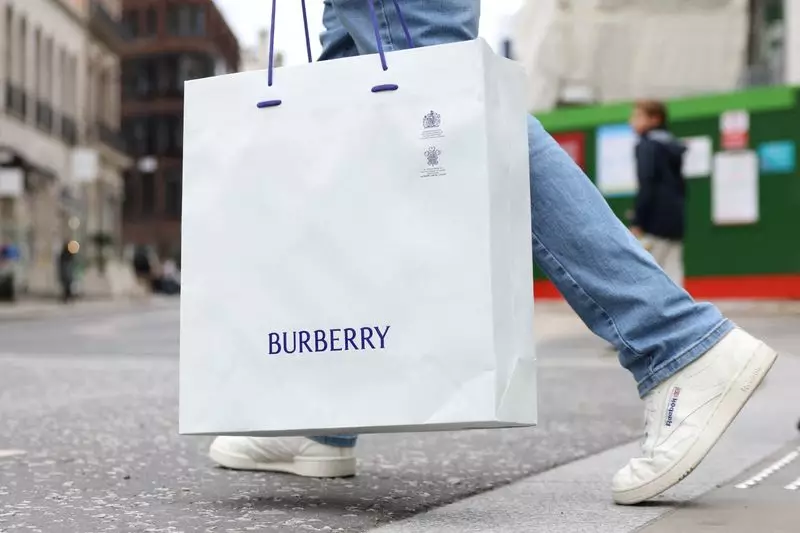In a surprising twist for the iconic British luxury label, Burberry announced a 4% decline in comparable store sales for its latest quarter, a figure that fell short of the projected 12% drop. This unexpected resilience has sparked significant enthusiasm from investors, who saw a remarkable 12% surge in Burberry’s stock following the news. The brand’s revival seems partly attributed to a successful holiday season, particularly in the U.S. market, which has become a focal point for Burberry’s turnaround efforts.
Newly appointed CEO Joshua Schulman, who took the helm six months ago, has been pivotal in steering Burberry away from troubled waters. His approach has concentrated on reinvigorating the brand by emphasizing its iconic products, such as the classic trench coat and signature scarves. In stark contrast to the previous direction that focused on experimental designs and higher price points, Schulman’s strategy aims to re-engage customers who may have felt estranged by the brand’s recent offerings. “We are extremely pleased with the results,” Schulman remarked during a press call, signifying a noteworthy inflection point for the company.
Burberry’s shift in focus appears to resonate well with consumers. The strong performance of cashmere scarves and outerwear is particularly notable, reflecting a growing appetite for luxury items that possess a clear brand identity. Schulman noted that December witnessed a significant upswing in new customer acquisition for the first time in over two years, illustrating a revival in brand desirability after a prolonged period of stagnant sales. This renewed interest signifies a potential recovery in luxury consumer sentiment, especially as Burberry adjusts its pricing strategies in key markets like the U.S.
Burberry’s sales data revealed a nuanced landscape when broken down by region. In the United States, a refurbished flagship store in New York has excelled, contributing to a 4% sales increase for the Americas. Meanwhile, Europe, the Middle East, India, and Africa (EMEIA) reported a lesser decline of 2%, indicating improved stability after more severe drops in past quarters. Asia Pacific, however, still lags behind, showing a 9% drop but demonstrating an improvement from a staggering 28% decline earlier. These figures suggest that while Burberry is recovering, not all markets share the same momentum, particularly in Asia, which remains vital for long-term growth.
Despite facing challenges, Burberry’s outlook has begun to brighten meaningfully. The company has revised its profitability expectations for the financial year, propelled by the successful clearance of inventory through strategic markdowns initiated in December. CFO Kate Ferry commented on the encouraging signs across various metrics, supporting the notion that consumer confidence may be stabilizing, particularly in China—a core market where Burberry recently opened a new high-profile store in Beijing.
Although Burberry’s third-quarter retail revenue of £659 million ($818 million) reflects a decline from the previous year’s £706 million, the company appears to be on a trajectory toward mitigating prior losses. The anticipated presentation of the Autumn/Winter 2025 collection at London Fashion Week is set to be another defining moment for Burberry, offering a further opportunity to influence brand perception and consumer interest.
While Burberry is navigating its path forward, it does so amid a dynamic and competitive luxury market. Industry players like Kering and LVMH are also demonstrating resilience, with their stocks reflecting growing investor confidence towards luxury brands. Analysts suggest that recent strong performances from other luxury labels could positively impact perceptions about the broader luxury market, reinforcing optimism that demand is indeed on the upswing.
Burberry’s recent sales performance marks a promising step in a longer saga of recovery and brand reinvention. With Schulman at the helm steering changes that resonate with customers, the brand could be on the brink of a meaningful renaissance—a transformation that could redefine its standing in the luxury sector.

